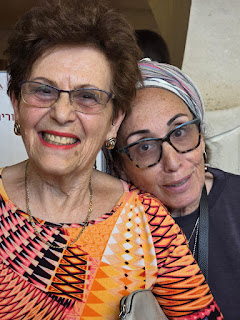In this piece on this week's parashah, our member Rabbi Paul Bloom takes a deeper look at Hashem’s question to Bilaam and explains how some of our most valued Torah commentators have understood it.
In parashat Balak, the enigmatic prophet Bilaam receives an offer
from the emissaries of Balak, king of Moav: to become a royal advisor and curse
Israel. Immediately, we see that Bilaam is not an ordinary man; he possesses
extraordinary spiritual gifts, a reputation for words that shape reality, and a
unique connection to the Divine.
That night, Hashem appears to Bilaam in a dream and opens their
conversation with a strikingly simple question:
“Who
are these people with you?”
On the surface, it sounds
like small talk or a naive inquiry. But, as Chazal show us, this question brims
with profound meaning. How could the Omniscient One not know who they are? The
question itself demands exploration.
Three Classic Interpretations
(1) The
Kli Yakar: A Rhetorical Rebuke
The Kli Yakar explains that Hashem’s question is rhetorical and
scornful. Read properly, it isn’t a request for information but a rebuke:
“Who are they? They are nothing.”
Hashem is telling Bilaam: These emissaries represent corruption and
moral decay. Why are you giving them respect? Why are you entertaining their
mission to curse a people blessed by God? The Torah warns that keeping corrupt
company corrupts the soul—just as Rambam teaches that a person’s environment
profoundly shapes their character. Hashem’s question here serves as a piece of
mussar: Choose your company wisely.
The emissaries’ presence with Bilaam is already bringing out his worst
impulses.
(2)
Rashi: The Illusion of Divine Ignorance
Rashi, citing Chazal, sees in this question a test of Bilaam’s
beliefs. By asking “Who are these
people?” Hashem gives Bilaam space to entertain a dangerous idea:
perhaps there are things God doesn’t know. This aligns with what some ancient
philosophers, like Aristotle, believed—that God, perfect and infinite, is too
lofty to care about or know the trivial details of human life. If Bilaam
embraced this mistaken theology, he might believe he could curse Israel when
God “wasn’t paying attention.”
This question opens a door for Bilaam to exercise his bechirah—his free will—to choose
between recognizing God’s intimate involvement in the world or adopting a
worldview that divorces God from human affairs. And indeed, Bilaam’s story is
about the paradox of free will: his intentions are evil, yet Hashem turns his
curses into blessings for Israel.
(3) The
Sforno: A Call for Self-Reflection
The Sforno offers a more practical interpretation: Hashem wasn’t
saying He didn’t know who the emissaries were; rather, He was pushing Bilaam to
ask himself what their intentions were. Were they genuinely seeking his wisdom,
or were they merely using him as a blunt instrument to harm Israel?
This is a timeless lesson: we must learn to distinguish between
people who seek us out with sincerity and those who merely wish to exploit our
abilities for their own agendas. It’s a call to be vigilant about relationships
and not be blinded by flattery or ambition.
A Deeper Layer: Who Are They For
You?
There’s also a deeper, existential reading: Hashem’s question
echoes the question He posed to Adam in the Garden: “Ayeka – where are you?” It’s not about physical location but
spiritual awareness. Here, Hashem is asking Bilaam:
“Who are these people in your eyes? What
do they mean to you?”
Do you see them as partners in a just cause, or are you being
seduced by their offers of honor and wealth? This question challenges
Bilaam—and us—to examine our motives and relationships honestly.
Bilaam v Avraham: A Clash of Worldviews
The Mishnah in Pirkei Avot (5:19) compares the students of Avraham
Avinu with those of Bilaam HaRasha. Despite their shared spiritual gifts and
intellectual brilliance, they stand as polar opposites:
●
Avraham exemplified generosity (ayin tovah),
humility, and a desire to bring blessing to the world.
●
Bilaam embodied greed (ayin ra’ah),
arrogance, and a drive to destroy what he envied.
Bilaam’s insatiable lust for honor and wealth led him to try to
curse Israel. Yet, in a stunning twist, God transformed his curses into some of
the Torah’s most beautiful blessings—visions of Israel’s family life, tents of
learning, and dedication to God. These blessings remain with us as enduring
praise of the Jewish people, despite their source being a man intent on their
destruction.
Conclusion
The seemingly simple question “Who are these people with you?” encapsulates a wealth of moral
and theological teachings:
●
It’s a
reminder to choose our company wisely.
●
It
challenges us to clarify our beliefs about God’s role in our lives.
●
It urges
us to discern whether others value us for who we are or merely what we can do
for them.
●
And it
calls us to confront our own motives honestly.
The story of Bilaam teaches that even someone with great talents
can fall prey to greed and ego if they fail to align their gifts with a higher
moral purpose. But it also teaches that God’s plan will always prevail—and,
sometimes, He uses even the most unlikely people to reveal profound truths.



















